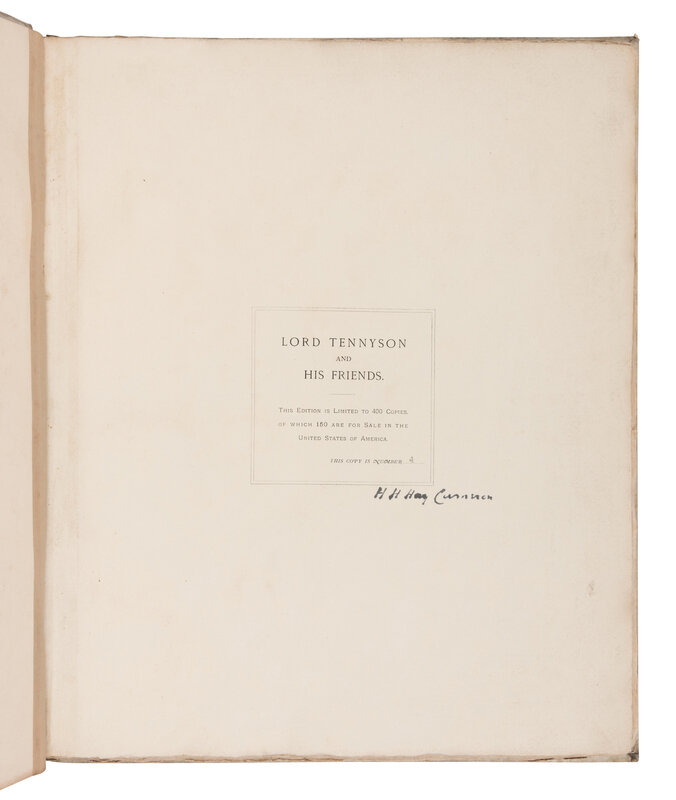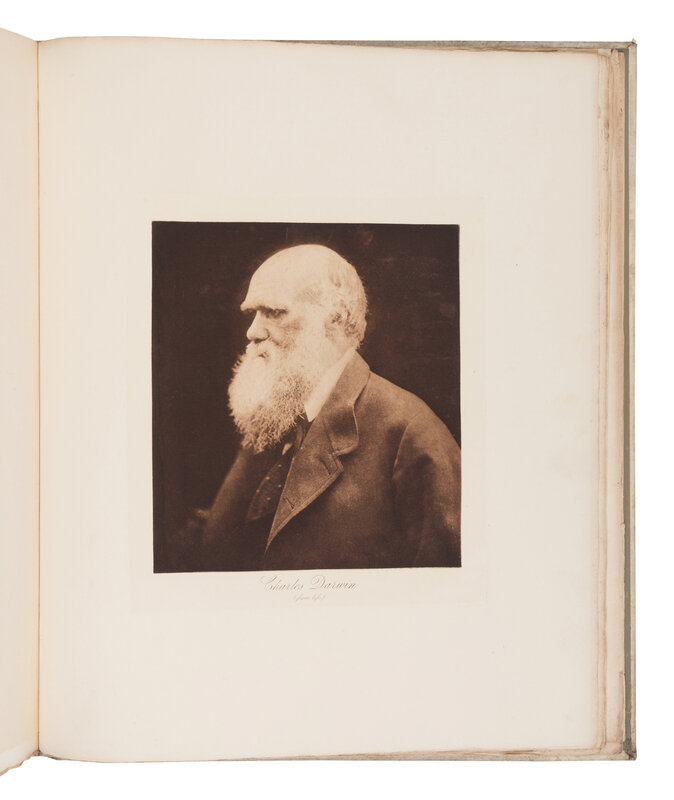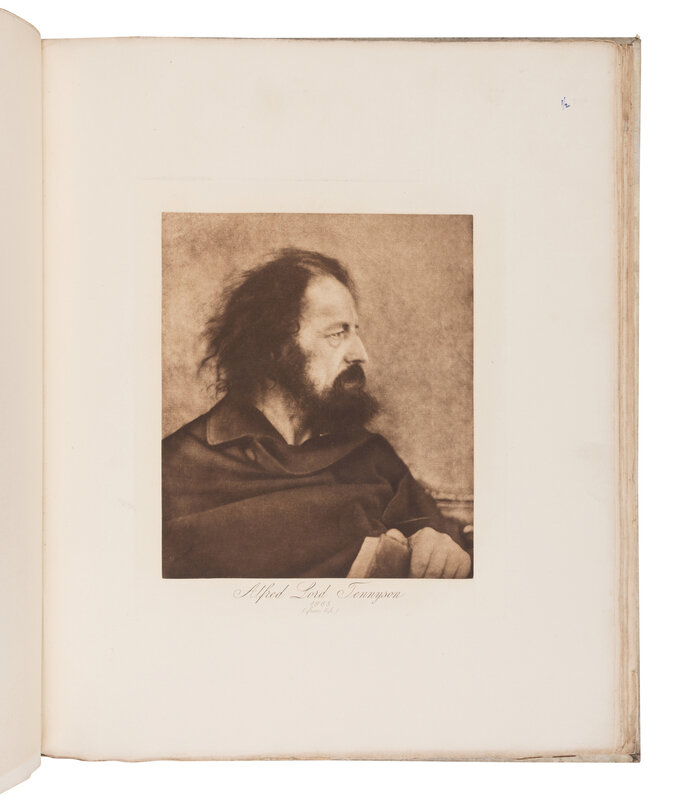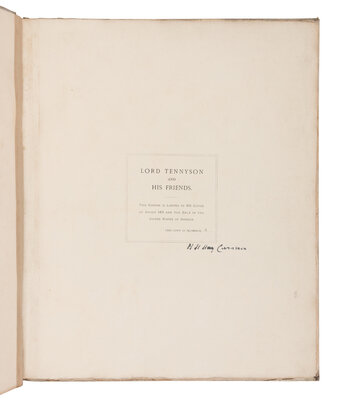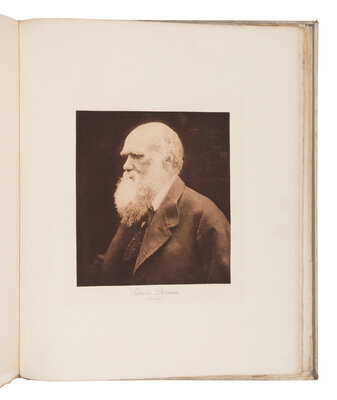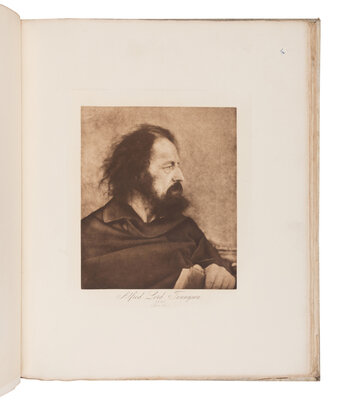Lot 192
[TENNYSON]. -- [CAMERON]. Alfred, Lord Tennyson and his Friends. L., 1893. ONE OF 10 DELUXE COPIES.
Sale 2065 - Fine Printed Books and Manuscripts, Including Americana
Nov 14, 2024
9:00AM CT
Live / Chicago
Own a similar item?
Estimate
$3,000 -
4,000
Price Realized
$4,128
Sold prices are inclusive of Buyer’s Premium
Lot Description
[TENNYSON, Alfred (1809-1892), subject]. -- [CAMERON, Julia Margaret (1815-1879), photographer]. Alfred, Lord Tennyson and his Friends. With text by Anne Thackeray Ritchie and H.H. Hay Cameron. London: T. Fisher Unwin, 1893.
Folio. Photogravure frontispiece and 25 portrait plates by Julia Margaret Cameron, with captioned tissue-guards printed in red. Original gilt-lettered vellum, uncut, green coated endpapers (extremities soiled with a few minor stains).
FIRST EDITION, LIMITED ISSUE, number 4 of perhaps as few as 10 deluxe copies, SIGNED BY HENRY HERSCHEL HAY CAMERON, of a total edition of 400 unsigned copies (the majority of these being in a gilt decorative cloth binding). This posthumous collection, a collaboration between Julia's youngest son Henry and the novelist Anne Thackeray Ritchie (1837-1919), includes four photogravures of Alfred Tennyson, including the 1865 photograph he is said to have liked best, dubbed “The Dirty Monk.” Other subjects include Tennyson's wife and sons, Julia Margaret Cameron herself, Anne Thackeray Ritchie, Henry Wadsworth Longfellow, Robert Browning, and Charles Darwin. Cameron was known for her soft-focus technique and intimate, evocative portrait style, which was considered unconventional and even radical for her time. These photographs can best be described as demonstrating a "psychological intimacy and intensity that is compellingly modern" (Parr & Badger).
RARE: We have traced only one copy in commerce (Peter Harrington, Christmas 2017, catalogue 140) in a vellum binding that was signed, and no copies appearing in auction records. This signed vellum copy was the lowest numbered copy (number 10) known before our copy (number 4) came to market. The next number we could trace was number 16 and was bound in the usual cloth, and so it seems likely that perhaps only as few as the first 10 copies were bound in vellum. Parr & Badger I:69; Wise, II:85.
Condition Report
Contact Information
Auction Specialist
